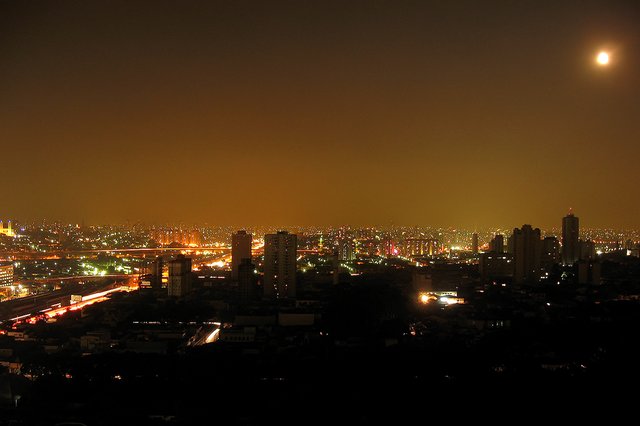
A partial blackout in the Brazilian State of Espiritu Santo, March 7, 2007. The picture is attributed to Diego Torres Silvestre from Sao Paulo, Brazil and is used under a Creative Commons Attribution Share Alike 2.0 Generic license.
Whether or not you have electricity in your home very much depends on where in the world you live. The reliability, resiliency, carbon footprint and security of your electricity also depends on your personal resources. The map below shows graphically where electricity deserts are. Overwhelmingly deficits are in areas that have underdeveloped, or undeveloped economies.
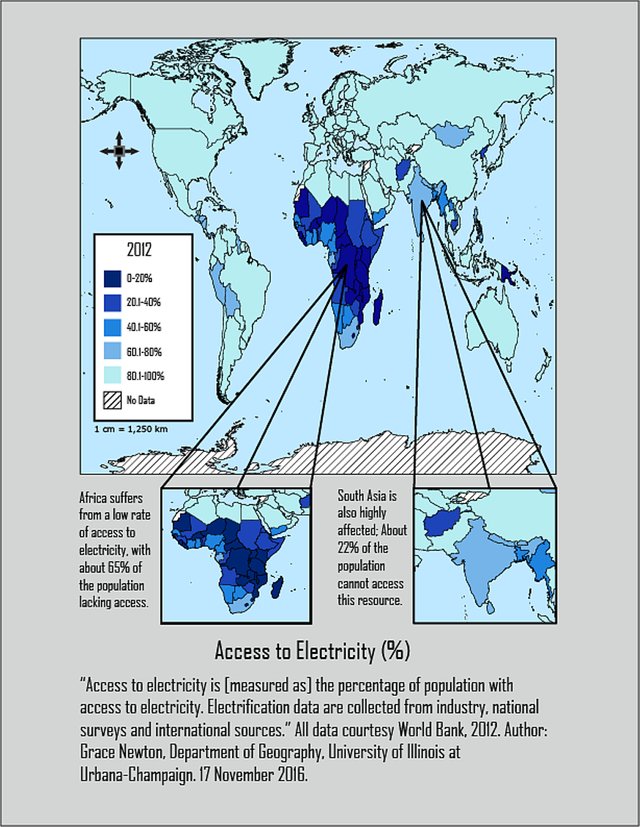
This map shows world access to electricity by country. The map was made by GraceN.Cartography. It is used under a Creative Commons Attribution-Share Alike 4.0 International license.
Anybody who has lived through a blackout realizes quickly the importance of electricity in everyday life. I know I get indignant when power goes out and I'm angry when it doesn't come back quickly. These two aspects of electricity delivery are described usually as reliability and resilience. Other aspects of electricity delivery that may seem less pressing because they appear to be more remote, are accessibility (in a global sense) and environmental impact. Increasingly, we're becoming aware of another serious issue that affects our electrical system: security. What if the 'grid' is 'hacked'? What if it is physically destroyed by terrorists? Our sense of vulnerability grows as our awareness of these risks increases.
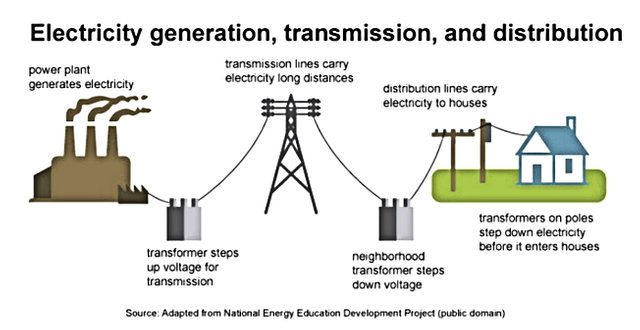
Fortunately, there is a remedy for each of these electrical system vulnerabilities. There is a more reliable, resilient, accessible, clean and secure technology available: microgrids. These are already widely used, and are getting better every day.
%204.0%20international.jpg)
Illustration of a swarm microgrid, where households are interconnected and receive energy through solar panels. The picture is credited to S. Groh. His citation reads: From Ph.d: *The Role Of Access To Electricity In Development Processes: Approaching Energy Poverty Through Innovation. Aalborg Universitet.
A 2018 report by the World Economic Forum places the number of people without electricity, globally, at 1.1 billion. This number does not include those who have inadequate or unreliable access to electricity. In 2017, the Rockefeller Foundation estimated that 1.2 billion people in the world have no access or poor access to electricity. As dismal as these statistics are, they could change quickly if microgrid technology were more widely available. Expansion and improvement of this technology would benefit not only people in underserved communities, but also those of us who routinely receive electricity through a central grid. For us, the reliability and resilience of our electrical service would be improved so that we don't have to feel so helpless the next time a hurricane is headed our way. Not only that--electricity delivered through microgrids would be so much "cleaner". By switching to general use of clean, microgrid technology, we would reduce our carbon footprint.
How did we get into the situation we find ourselves? How did the system of centralized delivery arise? The origin of the modern grid may be found in the nineteenth century, when two inventors, Thomas Edison and Nikola Tesla, battled for dominance in the field of electrical generation. Edison pushed for widespread use of direct current--DC--technology and Tesla campaigned for adoption of alternating current--AC. AC won out, and this was largely because the transformer was invented.
The magic of the transformer is that it can take high voltage electricity, which flows from a generation plant and "transform" it into low voltage electricity that can be used by the end consumer.
The Transformer is Invented
According to the IEEE (Institute of Electrical and Electronic Engineers), a number of advances by different people led to the invention of the transformer. When electricity leaves a generation plant, it may run through power lines at as much as 700,000 volts. When the electricity reaches our homes it may come in at 110 volts. But when it reaches a factory it may arrive with several thousand volts. It's transformers that change the voltage to suit the end consumer. However, it turns out this is a very inefficient way to deliver electricity and much energy is lost in the process. This inefficiency increases cost, fuel consumption and our carbon footprint.
The Chicago World's Fair
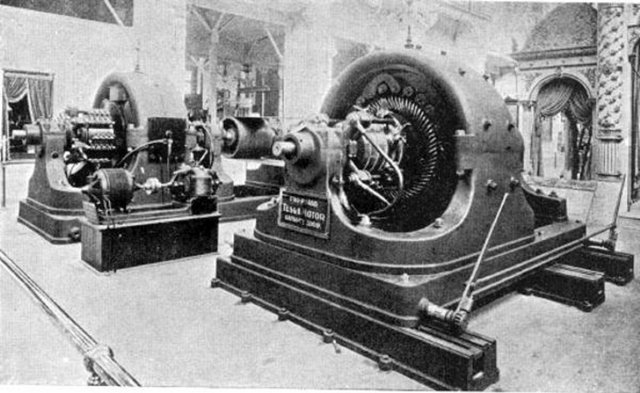
The picture shows Tesla's polyphase AC generator at the Chicago World's Fair. The image is in the public domain. It was taken in 1893 and the author is unknown.
With the use of a transformer, alternating current could travel much farther and faster than direct current. A demonstration of its utility was presented at the Chicago World's Fair in 1893 when the Westinghouse Corporation lit up the Fair with AC electrical transmission. The final blow to widespread use of DC transmission occurred at Niagra Falls in 1896, when Westinghouse Corporation was able to convert energy from the Falls to light the city of Buffalo with alternating current. In a few years, Westinghouse was powering the lights on Broadway, in New York City.
Alternating vs. Direct Current
AC technology was a natural fit with centralized generation, because the electricity could be produced at one location and sent over great distances. The expansions of centralized generation and distribution of electricity over high power lines coincided with a rapid growth of industry and cities in the late 19th and early twentieth centuries. This was a global phenomenon.
AC and DC Icons
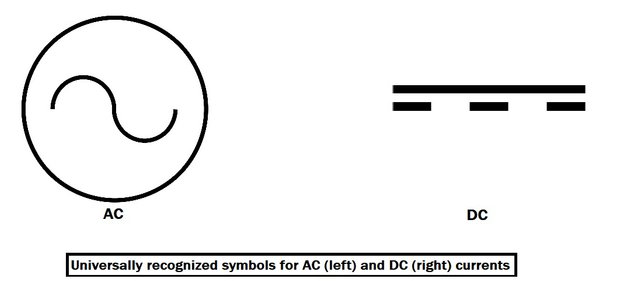
Without a widely accessible, affordable, dependable electrical system the twentieth century would not have been the century of global economic expansion that it became.
In the United States, by 1920 more than 50% of the population lived in cities. In Japan, between 1904 and 1911, rapid electrification helped to fuel industrial growth that would make Japan a formidable global competitor. And in Johannesburg, South Africa, the discovery of gold, installation of an electrical grid and rapid urbanization occurred almost simultaneously.
The Grid in the 21st Century
In the twentieth century the growth of electricity was aided by government regulation. This growth demanded enormous outlays of capital and vast exploitation of fossil fuels. In this regulatory and economic environment, utility companies developed into "natural monopolies", which were organizationally inflexible. They were unable to adapt to evolving circumstances.
If Edison and Tesla were alive now, would Edison get the last laugh? It turns out the high velocity transmission lines that fueled growth in the 20th century don't meet the needs of the twenty-first-century. In fact, many of us today use direct current to power some familiar devices, including cell phones, computers and LED light bulbs.
When speaking of the effectiveness of a utility delivery system a number of metrics are applied. With regard to electricity these commonly are reliability, resilience, accessibility, security, and environmental impact.
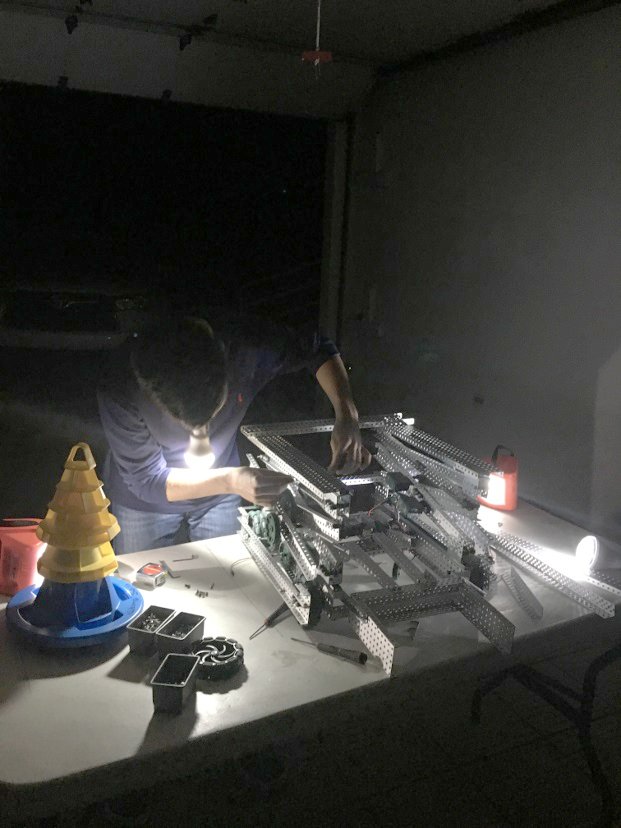
This picture was taken on November 17, 2017, Almost two months after Hurricane Maria hit the island of Puerto Rico. The young man is Nelson Badillo, a high school junior. He's trying to complete a project in robotics. His only light is the rechargeable solar bulb that's strapped to his forehead. The picture is used under a Creative Commons Attribution-Share Alike 4.0 International license.
How Does the Centralized Grid Measure Up?
Reliability
On a site called "World Power Outage", some major outages that have occurred since 2000 are noted. To name a few:
*August 14, 2003, power outage covers cities across eastern Canada and the U.S.
*November 10, 2009, vast swath of central and Southern Brazil plunged into darkness
*July 31, 2012 hundreds of millions without power as half of India goes dark
*October, 2012, 70% of the island of Jamaica loses power; approximately 8,100,000 in 17 U. S. states lose power
*March 11, 2014, major blackout hits Darwin, Australia
*September 20, 2017 3.5 million people in Puerto Rico lose electricity
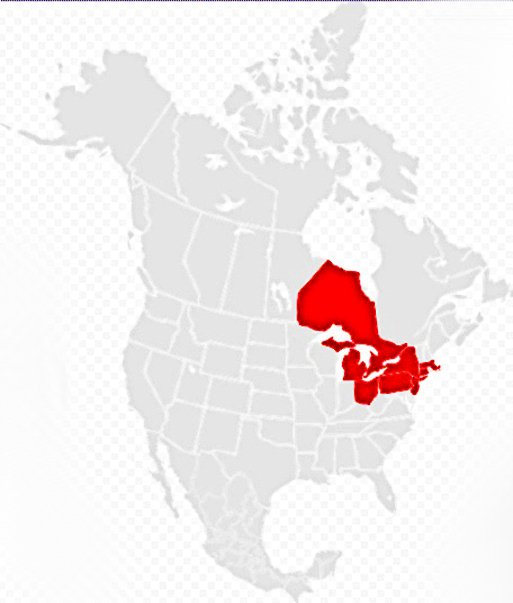
This map gives a general idea of the area covered by the 2003 blackout in North America (in red). Areas covered parts of Canada and the U.S. Image attributed to Lokal_Profil on Wikipedia and is used under a Creative Commons Attribution Share Alike 2.5 Generic license
Resilience
I selected a few of the outages listed above and checked out how long it took utility companies to restore electricity.
*Darwin, Australia: a little more than 12 hours in most places
*India, 2012, because there were two back-to-back grid failures it took a couple of days for recovery from both outages to take place
*Sandy : On Jamaica, 100% of the customers had service restored after 17 days. In the affected U. S. areas, some homes were without electricity three weeks later.
*Puerto Rico, one year after Hurricane Maria the Washington Post reports that "most" medical centers that provided dialysis and other essential services have had power restored but "the power grid remains fragile". An estimated 4,000 died. It is believed many of these succumbed to conditions precipitated by a lack of electricity.
Accessibility
As was stated earlier, more than a billion people in the world do not have electricity. And for many others, there is an electricity ration of a few hours a day. Some examples: Iraq; India; Nigeria; and Venezuela.
Environment
Depending on the type of fuel used, damage to the environment from central generation and distribution of electricity varies. The IEA reports that 40% of the world's electricity is fueled by coal. And according to Greenpeace, coal is the dirtiest of the fuels. Not that oil and gas--other fuels used in central generation-- are any bargain. Greenpeace reports that oil is responsible for 27% of CO2 released into the atmosphere and natural gas is responsible for releasing large amounts of methane,a potent greenhouse gas.
Another source of grid energy, hydroelectric power, does not emit greenhouse gases but does have an environmental impact by changing water temperature, flooding lands, and altering aquatic environments that marine life needs to survive.
Security
Deliberate sabotage of the grid has become a great concern in recent years. Not only is physical sabotage a danger, but a cyber attack seems inevitable. Evidence suggests penetration of grid networks has already taken place.
Do Microgrids Perform Any Better in These Areas Than the Grid?
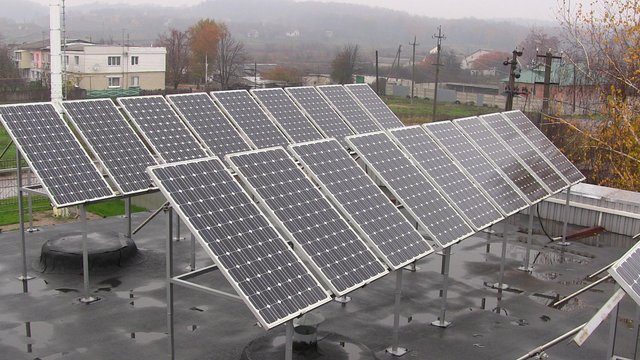
This solar-powered, rooftop, microgrid plant is designed to supply electricity to multiple users. The installation is located in the Kharkiv region of Ukraine. Picture credit: Oleg Savitsky. Used under a Creative Commons Attribution-Share Alike 4.0 International license.
Reliability
*According to Utility Dive, which reports on issues of electrical utilities for the industry, growth of the microgrid in North America is due to "the declining reliability of our current grid". The magazine further states that, "reliability (is) leading the arguments for microgrids".
*An article in Microgrid Knowledge explains that interest in microgrids is growing because one of the technology's many benefits is that it increases electricity reliability.
*In April of 2018, the governor of New York State, Andrew Cuomo, touted the benefits of a microgrid installation at the State University of New York Campus in New Paltz. The article describes the installation, which is fueled by solar energy, as offering "increased reliability".
Resilience
*An article in Energy Manager Today, entitled "Growth of Microgrids for Resilience", explains how interest in microgrids is growing around the world because of the ability to operate in challenging situations. The article describes Japan's movement toward development of microgrid technology ever since the nuclear meltdown at Fukushima.
*An article in Renewable Energy World entitled "This Is What Microgrids for Resilience in Emergencies Look Like", describes how microgrids are going to be part of Connecticut's preparedness in the future. The grids--some already in place-- will be installed at schools, fire stations, elderly care centers, police stations and at least one university and will be fueled by a combination of solar panels and natural gas.
*An article in Energy Manager Today entitled, "US Army Targets Energy Resiliency Through Microgrid Projects" describes the army's effort to convert their clean energy microgrid projects "to be more focused on a direct resiliency contribution for the Army".
Accessibility
This is where the argument for microgrids becomes truly compelling. Barriers to providing electricity to remote or undeveloped regions are many. These include large up-front capital outlay required for central grid development and concerns about adding greenhouse gasses to the environment. Microgrids can be installed with minimal capital outlay. Microgrids accommodate 'clean' energy. And they can be tailored to meet the needs of one customer or many customers. They can link into a larger grid or operate, when necessary, independently. This technology is potentially within the reach of virtually everyone in the world.
Climbing the (Solar1) Energy Ladder
%20public.jpg)
This mini solar panel won an award for concentrating solar energy. According to the caption, the panel set a "new world record of 43.5 percent for solar cell conversion efficiency.". The picture is in the public domain. Author is Energy.gov.
A microgrid can begin with something as simple as a solar powered light bulb. This will allow a child to do homework at night. In all likelihood it will replace a kerosene wick lantern. According to a research paper published at Stanford university, replacing a kerosene lamp with a solar powered LED lamp removes noxious fumes2 from a home, and increases the amount of light available for "study or income-producing activity."
The next step up the solar energy ladder would provide up to 100 watts of solar-generated power, which would allow individual home owners to light homes, charge cell phones and/or power a small appliance. Providing this technology to underserved areas is dependent on making the collection and storage of solar energy affordable. 3
An example of how this technology is not only accessible but transformative in underserved communities may be found in a small village in Kenya. There, one woman, Beatrice Marpe, has become a solar ambassador, introducing small scale, affordable solar installations to people in her community. "Compared with kerosene and firewood," Marpe explains, "the cost is low." She adds that people with small solar installations have the rare luxury of watching television.
Environment
An advantage of microgrids is their ability to deliver service without extracting a high toll on the environment. The examples below demonstrate how conversion to microgrids is driven by environmental concerns as much as it is driven by anything else.
*A paper published in 2014 by the Imperial College of London suggests that installation of microgrids would remove a significant fraction of the growing global carbon dioxide emissions.
*Kaiser Permanent in California decided to incorporate a solar-powered microgrid into its energy plan. As Rame Hemstreet, VP of Operations explains, the goal is to “do no harm” and achieve carbon neutrality in 2020".
*The Mashpee Wampanoag tribe in Cape Cod, MA is well on its way to establishing a microgrid fueled by renewable energy. President of the Mashpee's Community Development Corporation, Mark D. Harding, explains a goal of the program is to reduce the tribe's carbon footprint.
Security
While most of us are aware of the security risk to the central grid, we should take a heads up from the military, not only in the United States but in other countries, which are investing heavily in microgrid technology. Having a reliable, resilient energy source is considered essential for national security. That energy source, increasingly, is sought in microgrid technology.
*A 2017 article in *Microgrid Knowledge" reports that the U. S. Military has begun a program for developing of a mobile microgrid project. The idea is to make a rugged, completely self-sufficient mobile energy source.
*The Maritime Executive reported in May of this year that China has installed a remote-island intelligent microgrid on Yongxing Island in the South China Sea. The installation will aid in both civil and military development.
*A recent article in Science Direct explained that one of the prime motivations for choosing a microgrid over a centralized grid is security. Security includes risks of outage from natural disasters (hurricanes, earthquakes, etc.), cyber and physical attacks, and cascading outages due to the interlinking nature of a central grid.
There are so many problems facing us today that seem unsolvable. Electricity delivery is not one of those. Smart people--the military, schools, hospitals--are adopting microgrid technology. This needs to be a mainstream idea. Government investment in improving storage technology would make microgrid use even more affordable and accessible than it is today. That would be good for individuals, and the planet.
1 *Small scale wind turbines are another form of renewable energy available for microgrid use in some circumstances.
2 A study published in the Journal of Toxicology and Environmental Health reports on the inhalable particulate matter released by kerosene wick lanterns and describes the possible long-term health consequences of this exposure.
3 *Referred to as PV (photovalic) and BESS (Battery Energy Storage System)*

Some Sources used in writing this article
https://www.weforum.org/agenda/2018/06/1-billion-people-lack-electricity-solution-mini-grid-iea/
https://mashable.com/2017/09/15/one-billion-people-dont-have-access-to-electricity/#h5iTZQt2uOqT
http://www.dlsteiner.com/blog/2012/12/21/reliability-101-the-basics-of-electrical-distribution-system-reliability
https://www.greentechmedia.com/articles/read/enhance-utility-grid-resilience-icf-international
https://timeforchange.org/what-is-a-carbon-footprint-definition
https://www.energy.gov/articles/war-currents-ac-vs-dc-power
https://ieeexplore.ieee.org/document/6682002/
https://www.explainthatstuff.com/transformers.html
https://www.teslasociety.com/columbia_expo.htm
https://historyrat.wordpress.com/2013/01/13/lighting-the-1893-worlds-fair-the-race-to-light-the-world/
https://www.pbs.org/tesla/ll/ll_niagara.html
https://www.vox.com/2015/9/9/9287719/utilities-monopoly
https://www.economist.com/finance-and-economics/2000/04/13/a-century-of-progress
http://americanhistory.oxfordre.com/view/10.1093/acrefore/9780199329175.001.0001/acrefore-9780199329175-e-327
https://eh.net/encyclopedia/japanese-industrialization-and-economic-growth/
https://www.siemens.com/global/en/home/company/about/history/news/gold-rush-in-south-africa.html
https://www.economicshelp.org/blog/glossary/natural-monopoly/
https://www.ferc.gov/about/offices/oer.asp
https://www.nrdc.org/experts/john-moore/electric-grid-resilience-and-ferc-what-happens-next
http://www.worldbank.org/en/topic/energy/publication/sear
https://www.forbes.com/sites/constancedouris/2018/01/16/as-cyber-threats-to-the-electric-grid-rise-utilities-regulators-seek-solutions/#343f0551343e
http://www.theworldcounts.com/counters/interesting_facts_on_energy/consumption_of_electricity
http://www.mapreport.com/century/subtopics/d/o.html
https://www.cnn.com/2012/10/24/world/americas/tropical-weather-sandy/index.html
http://nation.time.com/2012/11/26/hurricane-sandy-one-month-later/
https://riskfrontiers.com/Briefing_Notes/Briefing_Note_269.pdf
https://blog.powercuts.in/?p=28
https://www.pioj.gov.jm/Portals/0/Sustainable_Development/Final%20%20DaLA%20Report%20Hurricane%20Sandy_Updated.pdf
https://www.dnainfo.com/new-york/20121121/gerritsen-beach/hurricane-sandy-victims-celebrate-thanksgiving-with-without-power/
https://www.washingtonpost.com/opinions/the-puerto-rico-death-toll-will-only-get-higher/2018/09/02/7b5d2eec-ad51-11e8-a8d7-0f63ab8b1370_story.html?utm_term=.c0f0308535b5
https://www.washingtonpost.com/national/harvard-study-estimates-thousands-died-in-puerto-rico-due-to-hurricane-maria/2018/05/29/1a82503a-6070-11e8-a4a4-c070ef53f315_story.html?utm_term=.3b8a328c3044
https://www.aljazeera.com/news/2018/07/electricity-cuts-iraq-life-unbearable-summer-heat-180731111220743.html
https://epic.uchicago.in/project/electricity-subsidies-rationing-and-manufacturing-growth-in-rural-india/
https://medium.com/@Edmund_Olotu/the-electricity-situation-in-nigeria-3f53c8ae0267
https://www.reuters.com/article/us-venezuela-blackouts/venezuela-begins-power-rationing-as-drought-causes-severe-outages-idUSKCN1GS2M5
https://www.iea.org/topics/coal/
https://www.greenpeace.org.uk/what-we-do/climate/energy/dirty-energy/
https://www.greenpeace.org.uk/what-we-do/climate/energy/dirty-energy/oil/
https://www.greenpeace.org/usa/global-warming/issues/natural-gas/
https://www.scientificamerican.com/article/how-bad-of-a-greenhouse-gas-is-methane/
http://environment-ecology.com/energy-and-environment/100-hydropower-and-the-environment.html
https://nationalinterest.org/blog/the-buzz/cyber-threats-the-us-electric-grid-are-real-19000
https://www.utilitydive.com/news/going-small-microgrids-are-good-for-reliability-but-are-they-good-busines/376365/
https://microgridknowledge.com/power-reliability-data-centers-survey/
https://www.governor.ny.gov/news/governor-cuomo-announces-completion-solar-generation-and-energy-storage-system-suny-new-paltz
https://www.energymanagertoday.com/japan-moves-toward-microgrids-distributed-power-generation-0172139/
http://www.world-nuclear.org/information-library/safety-and-security/safety-of-plants/fukushima-accident.aspx
https://www.energymanagertoday.com/2017-microgrids-resilience-0173813/
https://www.energymanagertoday.com/us-army-microgrids-resiliency-0175787/
http://large.stanford.edu/courses/2011/ph240/machala1/
https://rmi.org/blog_2015_05_12_building_and_climbing_the_solar_energy_ladder/
https://www.expogr.com/tanzania/solarexpo/detail_news.php?newsid=4985&pageid=2
https://www.imperial.ac.uk/media/imperial-college/grantham-institute/public/publications/briefing-papers/Solar-power-for-CO2-mitigation---Grantham-BP-11.pdf
https://www.planningreport.com/2018/08/24/kaiser-permanente-s-richmond-medical-center-solar-battery-microgrid-cec-funded-model
http://www.usetinc.org/news/the-mashpee-wampanoag-tribe-is-another-step-closer-to-becoming-energy-independent-with-renewable-energy-6-11-2018/
https://microgridknowledge.com/go-electric-military-microgrid-us-army-corps/
https://www.maritime-executive.com/article/china-installs-microgrid-on-woody-island#gs.G6GSymg
https://www.sciencedirect.com/science/article/pii/S136403211830128X
https://eco-globe.com/best-residential-wind-turbines/
https://www.ncbi.nlm.nih.gov/pmc/articles/PMC3664014/
https://ieeexplore.ieee.org/stamp/stamp.jsp?arnumber=8379343
Microgrids can certainly add to the robustness of a residential electric system, but residences can only generate so much power. Industrial users often require large amounts of power that has to be imported from other areas, whether power plants or dispersed generators. The reliability of long-distance transmission becomes extremely important to them. As transportation becomes increasingly electrified, the demand for electricity may rise while overall demand for energy falls.
One of the selling points of microgrids is that they can export power and earn money for homeowners. Hawaii has an abundance of solar energy. Oahu actually had to put a moratorium on residential solar because its grid became destabilized. Residences were dumping power when it wasn't wanted and with variability that the grid couldn't handle. Hawaii has also been investing in grid-scale energy storage, but it hasn't come to fruition yet. Grid storage is still an immature technology.
Downvoting a post can decrease pending rewards and make it less visible. Common reasons:
Submit
You just planted 0.12 tree(s)!
Thanks to @rufusfirefly
We have planted already 3433.95 trees
out of 1,000,000
Let's save and restore Abongphen Highland Forest
in Cameroonian village Kedjom-Keku!
Plant trees with @treeplanter and get paid for it!
My Steem Power = 39470.23
Thanks a lot!
@martin.mikes coordinator of @kedjom-keku
Downvoting a post can decrease pending rewards and make it less visible. Common reasons:
Submit
I welcome this response because it highlights the need for R&D in renewable energy sources. Our moment in time parallels that of the early days of computer technology--ENIAC. Look where R&D took us in computer science.
What we need to do is leave the dinosaurs behind--I mean literally. Fossil fuels. It's a concept we can outgrow, but resistance to change comes from three sources: those who make money from traditional generation; sclerotic government oversight; and lack of imagination (and inertia) on the part of the general public.
If the military (China and the US), at this stage of primitive renewable energy development, can power a base, then we can power anything. Insisting that it be tied to the grid, that people get "paid" for using renewable energy may be part of the problem.
I'm not an engineer, or a scientist. But I can see patterns in history. That's my field. The time is here for intensive, massive investment in the future--renewable energy. Perhaps we can make a museum dedicated to the old technology as we have museums that teach us about ENIAC.
I do appreciate your comment. I expected more to come along this in vein. I think my blog was too long for many people :)
Downvoting a post can decrease pending rewards and make it less visible. Common reasons:
Submit
Excellent post, microgrids are exactly the type of tech/system that come under the category of Technological Leapfrogging when deployed to low-income settings. With this kind of innovation, new girds stand a good chance of being of better quality than in some of aging grids in high-income countries. We keep cobbling bits together on top of the older system, while they can start from scratch and hopefully develop something cheaper and more resilient.
I really hope you’re right! A while back, I got a little scared of cascade failure within our power grids and wrote this post. I now live in constant fear of a solar coronal mass ejection. “The big one” is coming someday, if we don’t have the resilience in place by then it could be game over for many of us in the west.
Resteemed and I hope it gets picked up by @steemSTEM
Downvoting a post can decrease pending rewards and make it less visible. Common reasons:
Submit
What a blog! (yours from last month). Of course, the worst thing that might happen is loss of Netflix--oh, no. Seriously, you make the argument so well for preparedness. It's kind of a creepy Walking Dead apocalypse scenario. I do think the age of the grid is over...so vulnerable, so inefficient. Part of the resistance to addressing the issue is lack of imagination--people can't believe that life as they know it can disappear--and also money. Powerful forces are invested in the grid system: utility companies, stockholders, oil and gas producers, even government agencies. A new, smart, reliable, sustainable system of electricity delivery is not in their short-term interest.
Can't believe I missed your post--great stuff I miss on Steemit. Need a better system of sorting through.
Thank you for resteeming, and for your good wishes. The fact that you think the blog is worthwhile makes my day.
Downvoting a post can decrease pending rewards and make it less visible. Common reasons:
Submit
Thanks, yes I was pleased with that one, even if it did turn out a little dark in the end.
I have this sort of feeling for a lot of problems, until that is I meet the people that actually work on the problems. For instance, before I was around public health people I thought a global flu pandemic would for sure lead to the classic apocalypse scenario. Now, however, I understand more of the complexities and can see that governments do a lot of work behind the scenes preparing for these scenarios. I'm willing to bet that power infrastructure is the same.
Yes I'm interested to see how the new steemSTEM app will change the curation. I try to keep my feed updated but there is still a far amount of crap to sift through on a daily basis.
Downvoting a post can decrease pending rewards and make it less visible. Common reasons:
Submit
Thanks for the reassurance--if people like you are working at it, I feel better :)
Downvoting a post can decrease pending rewards and make it less visible. Common reasons:
Submit
Nice article. So there is a block chain based p2p network in development to enable a secure and convenient energy trade environment for individuals. This is also something which might be benificial to the creation of a less centralized energy network :)
Posted using Partiko Android
Downvoting a post can decrease pending rewards and make it less visible. Common reasons:
Submit
Thank you! I will look that up. I decided to write the post after an article appeared in the paper about upgrading 'the grid'. An upgrade that would cost something like a trillion dollars. Seemed insane. So I wrote this. Hard work ! I appreciate the comment:)
Downvoting a post can decrease pending rewards and make it less visible. Common reasons:
Submit
I would like to contribute some critical remarks and additions to this very important topic of energy production.
You stress several times that many people are still without electricity. I find this too sweeping, because it suggests that all these people suffer from it. Since I don't know whether people without a power supply that we take for granted actually lead a painful or their eyes a troublesome existence, I think such information should be handled differently. People who have never been accustomed to our modern standard before (may) see their world through different eyes than we see their world. ... What I want to express is that we fully modern people often have some kind of pity for "the poor and underdeveloped".
I don't address you so much personally, but rather our way of talking about things we take for granted ... a certain form of communication habit that we are used to.
But I definitely don't mean to say that it's not the case that people are undersupplied!
If I were to imagine that I was someone who had never had electricity before or who was less abundant (and therefore lacked nothing), then I would come into our world and would have no idea of environmental protection or other problems, I think I would quickly adapt to this habit. And then I wouldn't understand the world any more, when at some point I would realize that I was behaving problematically.
At least the power outages that occur are a sign of how much dependence we already have on the grid. I assume that hospitals, for example, have their own electricity supply. I know it from Hamburg Airport.
I would also like to say that I think we can also question the standard we are used to. As I see it, people treat electricity similarly to all resources available at all times. They are beginning to be careless with it. I take the liberty of drawing some conclusions about this form of carelessness when I observe in my city how people in residential buildings basically light up more rooms than they use, or how illuminations are activated for decoration overnight, just like a lax use or overuse of electrical appliances.
So far, I haven't even looked at the technology and components of Microgrid technology, and I may be going a little deeper into it. I am an extremely suspicious and skeptical person in this respect. Everything that sounds like a green solution I enjoy with caution, as I have heard and read far too much about Greenwashing. Here I am the one who has to be convinced of the clean solution and good intentions ;-)
Downvoting a post can decrease pending rewards and make it less visible. Common reasons:
Submit
I very much appreciate your commentary, as each point is relevant to this discussion.
First of all, we should leave uncontacted peoples alone. The 'gift' of modernity is not necessarily a benefit.
Electricity, any cultural intervention, should be solicited, not imposed.
However, for many people who live in underdeveloped or undeveloped economies, the struggle is to meet the demands of the industrialized world without having adequate tools to do that. A child should be able to do homework at night. Refrigeration has an indisputable place in increasing food safety, and availability. These are just basic benefits of modest electrification.
As for using too much--oh my, yes. The first step in reducing CO2 emissions is to reduce use. There seems to be no awareness that on an individual level we all have a responsibility to reduce consumption.
As for clean energy technology--I looked up Hamburg Airport. It seems they use geothermal. I'm not sure how that works, actually, although I have read that some geothermal does contribute to global warming. Don't know much about it.
I did find an example of one village in Sweden that has managed to become carbon neutral. It's a wonderful beginning, but at this point this sort of enterprise is still in the experimental stages. We need to do so much more in the way of research and development. We can have a carbon neutral electrification system around the world, but greater storage and collection capability is necessary. And this has to be more affordable for the average consumer--much as transistor radios or wristwatches are today.
To me, this issue is so clear. Perhaps you will think about it more and do your research--which you do very well on so many subjects.
Downvoting a post can decrease pending rewards and make it less visible. Common reasons:
Submit
Thank you for the two links and for giving it a name "uncontacted people". I have already seen this pictures but hope that other readers also will take up the link.
Will also look what the Swedish village is offering.
Here, in exchange is maybe something which does interest you as well:
https://www.ecogood.org/media/filer_public/5d/4d/5d4d17bc-156b-44ec-9115-fe6b37c63187/ecg_compact_balance_sheet_workbook.pdf
It's about the common good and a test companies can use for themselves in order to see what kind of footprint they actually make.
Downvoting a post can decrease pending rewards and make it less visible. Common reasons:
Submit
I love that link. Deserves more than a cursory reading. Will take it to my iPad tonight and read before sleep. Hope it doesn't give me nightmares :)
Downvoting a post can decrease pending rewards and make it less visible. Common reasons:
Submit
Congratulations @agmoore, your post has been selected by the @asapers for a resteem and a feature in our brand new curation post. Issue 97
What does this mean for you? Well first an upvote from some members of the team, we are no @curie or @ocd but who is going to be unhappy with some extra upvotes. Also each post featured in the article will receive a 10% share of the SBD generated from the curation post.
Keep up the great work and please consider supporting the @asapers with an upvote and/or a resteem on the post you feature in. Please wait seven to ten days for payout.
Your friendly @asapers
Giving back A.S.A.P
Downvoting a post can decrease pending rewards and make it less visible. Common reasons:
Submit
Thank you @asapers. An honor to be included. It's a pleasure to be part of the @asapers community, and your support is always appreciated!
Downvoting a post can decrease pending rewards and make it less visible. Common reasons:
Submit
that is a lot of info I am at work but will try to come back to it. Thanks
Downvoting a post can decrease pending rewards and make it less visible. Common reasons:
Submit
Thanks, @stever82. It's a long post, but I didn't know how to make my case and say less.
I'm starting on my finishthestory ending. Good beginning this week, I think. Have an idea....See you over there.
Downvoting a post can decrease pending rewards and make it less visible. Common reasons:
Submit
Thank you for your contribution. Dont forget to link references and sources when applicable!
=======================================================================================
This post was upvoted and resteemed by @Steemgridcoin with the aim of promoting discussions surrounding Gridcoin and science.
This service is free. Please follow @steemgridcoin if you want to support this initiative.
Have a nice day. :)
Downvoting a post can decrease pending rewards and make it less visible. Common reasons:
Submit
I was thinking power failure dont happen in foreign countries..... Mr @agmoore thank you for proving me wrong...
Downvoting a post can decrease pending rewards and make it less visible. Common reasons:
Submit
Yes, all over the world. Thank you for reading and commenting!
Downvoting a post can decrease pending rewards and make it less visible. Common reasons:
Submit
I derived this fun fact from the very first paragraph: Africa is the king of the deserts, not only the real ones but also the electricity ones!
Oh boy! That's even worse than the state depicted in that Southpark internet gag.
Didn't know about microgrids, and it sounds like an interesting plan.
But, firstly, I want to inquire about the legal issues that might crop up. I trust big grids cos they got the authority and oversight by the government etc. But with microgrids, who's going to check everything? What if someone tech-savvy is stealing electricity from me? Or how do we settle a disagreement about payment, or another issue, will we have to take it to court?
Secondly, while thinking about how big institutions who depend on power, like hospitals, solve the issue, I thought of course of generators. Isn't it easier to ask the concerned consumer to buy his own generator rather than change the entire infrastructure? (Of course, this would only work for short-term outtages: we'd still be vulnerable to hurricanes and hack attacks.)
But generally, these are minor issues in a discussion that overall seems to favor microgrids.
Downvoting a post can decrease pending rewards and make it less visible. Common reasons:
Submit
Thanks for the Southpark link :))
Actually, changing the whole infrastructure is what is necessary. Changing the way we view energy consumption and generation. We need a new paradigm. The old one fails. It's not just hurricanes and outages. It's overall security, waste, CO2, cost.
Obviously, I'm not an engineer, but the reading I did persuades me that with research we can improve the current state of wind/solar and even geothermal. We can build a new, flexible system of electricity delivery that is integrated and yet islandable. The legacy grid, a product of early 20th century technology and imagination, is ready for huge investment to keep it viable. But why bother throwing money into an inflexible, insecure system. Look to the future. Build for the future. Invest in the future. Microgrids.
You can tell, I' really sold on this.
Downvoting a post can decrease pending rewards and make it less visible. Common reasons:
Submit
Congratulations @agmoore! You have completed the following achievement on the Steem blockchain and have been rewarded with new badge(s) :
Click on the badge to view your Board of Honor.
If you no longer want to receive notifications, reply to this comment with the word
STOPTo support your work, I also upvoted your post!
Do not miss the last post from @steemitboard:
Downvoting a post can decrease pending rewards and make it less visible. Common reasons:
Submit
Nice article. You might be interested in #solarcoin which is aimed at incentivising solar energy production. Offgrid is fine and the community supports charities such as SolarAid who install solar lamps. They are also participating with a United Nations programme for affordable energy in Moldova.
A problem with micro-grids in developed nations is that laws often prevent them being setup.
Downvoting a post can decrease pending rewards and make it less visible. Common reasons:
Submit
Thank you for reading my blog and commenting. The various financial opportunities offered at Steemit are beyond me--I just blog and comment. Trading, bots, all that is just too complicated. Thank you for apprising me of the opportunity, though.
Downvoting a post can decrease pending rewards and make it less visible. Common reasons:
Submit
Seems I might not have really communicated very well there, www.SolarCoin.org is nothing to do with steemit, trading or bots.
It's an incentive given free of charge to producers of solar energy, in an attempt to make solar a more affordable technology for everyone and move the world to a clean energy future.
I'm not suggesting you buy any, but as someone who appears interested in micro-grids there is a connection to solar incentives.
Anyway if its not interesting for you, that's cool too.
Downvoting a post can decrease pending rewards and make it less visible. Common reasons:
Submit
I am sorry. I did misunderstand. Despite my long blog, I'm not very sophisticated. I've just looked up SolarCoin and the project seems very admirable. I will do research (you can tell, that's one thing I'm good at) and try to promote the project as I learn about it. Thank you for taking the time to clarify. Can't say more until I know more. Every one of us has a role to play in bringing about change. We can be part of the problem by passively allowing what is to continue, or we can provide solutions. I'd like to be on the solution team.
Downvoting a post can decrease pending rewards and make it less visible. Common reasons:
Submit